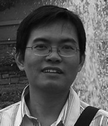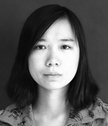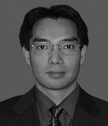I. INTRODUCTION
Increasing development of microwave communication system in increasing demand for the performance of the device, and how to improve the frequency selectivity of the passband and get high isolation has become a key and difficult point of the circuit design. As one of the most important passive circuits, power divider has become the focus of researchers’ attention. Many power dividers, such as substrate-integrated waveguide power dividers [Reference Eom, Byun and Lee1–Reference Hong, An and Yook3], ring-cavity power dividers [Reference Song and Xue4], and planar circuit power dividers [Reference Song5, Reference Li and Wu6] have been proposed. In addition, the power divider with bandpass filtering is attractive because of multi-function and compact size [Reference Singh, Basu and Wang7–Reference Vélez14]. In [Reference Singh, Basu and Wang7], the parallel coupling line is utilized to design two- and three-way dividers with bandpass-filtering response. An ultra-wideband power divider using a pair of stepped-impedance open-circuited stubs and parallel-coupled lines in two output ports was developed to improve the frequency selectivity shown in [Reference Wong and Zhu8]. In [Reference Chen9–Reference Song13], resonators were embedded inside of the power dividers to obtain bandpass-filtering response and decrease the circuit size. The power divider with an inductive transformer added to the output stage of a bandpass filter is implemented in [Reference Vélez14], but the resonator in this power divider is embedded in the ground, which is inconvenient in microwave application.
In this paper, a four-way wide-stopband bandpass-filtering power divider with high selectivity has been proposed. Eight 1/4 wavelength resonators are symmetrically placed to realize the bandpass-filtering response. By introducing source-load coupling structure, the transmission zeros are generated near the passband, which can improve the frequency selectivity of the passband. Finally, an S-band four-way power divider has been designed, fabricated, and measured. The designed power divider has not only the wide stopband, but also the high-frequency selectivity. The simulated and measured results have been discussed.
II. STRUCTURE, ANALYSIS, AND DESIGN
The structure of the presented four-way power divider is shown in Fig. 1. The microwave signal is divided into two ways through a transmission line impedance transformation structure, and transmits into two parts equally with the same structure (“structure II”). The slot line below the impedance transform transmission line in the “structure I” is etched on the bottom layer. One end of the slot line is shorted, and the other end is opened by etching a circular structure. The isolation resistor R 2 is located at the open end of the slot line, as shown in Fig. 1. As can be seen from the structure, assuming that the input impedance at the input of “structure II” is Z in , then by adjusting the size of the impedance transformation part in “structure I”, so that “structure I” is matched to Z in at the output ports. So the impedance matching of the power dividers can be completed. It can be seen that the “structure I” and “structure II” can be designed independently. Then the two structures will be analyzed respectively.

Fig. 1. Structure of the four-way power divider based on 1/4 wavelength resonator.
Let Z in = 50 Ω, the “structure I” section of the equivalent circuit is shown in Fig. 2. Among them, the ports 2 and 3 are the input ports of the “structure II” section. The odd–even mode analytical method is used for analysis. The equivalent circuit of odd and even modes is given in Fig. 3. When the two ports are matched at the same time, the following equation can be obtained for the odd-mode equivalent circuit,
When port 2 matches, the following equation can be obtained for the even-mode equivalent circuit,
When θ 1 is equal to λ/4, it can be obtained from (1) and (2)
As can be seen from Fig. 1, the “structure II” section is a two-way power divider based on the 1/4 wavelength resonators. Four 1/4 wavelength resonators are symmetrically placed along the middle plane, each branch have two resonators coupled each other. The isolation resistor R 1 is located between the two output ports to improve the isolation of the two output ports. The open stub is placed between the two input feeding lines to achieve the source-load coupling, and can also introduce the transmission zeros near the passband to improve the frequency selectivity of the passband.

Fig. 2. Equivalent circuit diagram of “structure I”.

Fig. 3. The odd- and even- mode equivalent circuit of “structure I”. (a) Odd mode; (b) even mode.
The equivalent circuit of the two-way power divider is shown in Fig. 4. A LC resonant structure is used to represent the coupling between the resonator, the source, and load feeding lines and the resonators; the coupling between the resonators and the coupling between the source and load feeding lines are represented by J-converters. Odd–even mode analytical method is used to analyze this structure. The even- and odd-mode equivalent circuits can be obtained after making the symmetry plane open-circuit and short-circuit, respectively, as shown in Fig. 5.

Fig. 4. Equivalent circuit of two-way power divider.

Fig. 5. The odd- and even-mode equivalent circuit of the two-way power divider. (a) Even mode; (b) odd mode.
Under the condition of the even mode, the voltage across the resistor is equal, there is no current flowing through the resistor, and then the resistor can be removed. If the symmetry plane is open circuit, the impedance of the port 1 becomes twice of the original impedance. As can be seen from Fig. 5(a), the even-mode equivalent circuit is similar to the second-order bandpass filter, that is to say, the bandpass response can be obtained from this two-way power divider.
Under the condition of the odd mode, the input port is short circuit, and the resistor is short circuit in the middle position, as shown in Fig. 5(b). When port 2 is matched, the value of isolation resistor R 1 can be obtained
The external quality factor of the input and output ends can be regarded as a function of J 1 and J 2, and it can be expressed as
where f
0 is the resonant frequency of resonator and
![]() $\Delta f_{\pm 90^{\circ}}$
represents the frequency range of the phase corresponding to positive and negative 90° in the phase curve.
$\Delta f_{\pm 90^{\circ}}$
represents the frequency range of the phase corresponding to positive and negative 90° in the phase curve.
The desired input port and out port external quality factors can be obtained by adjusting the width of the input feeding line W5 or the distance S3 between the feeding line and resonator and the width of the output feeding line W6 or the distance S4 between the feeding line and resonator separately. The analysis and optimization about the presented power divider can be implemented by using ANSYS HFSS, and the relationship between them is obtained as shown in Fig. 6.

Fig. 6. Relationship between external quality factor and structure size. (a) Input external quality factor; (b) output external quality factor.
According to Fig. 5(a), the two-port network matrix parameter [Z] can be obtained, and the relative parameters of the converter can be derived from the following equation
 $$\rho _L = - \tan ^{ - 1}\left[ {2\displaystyle{{({\bar X}_{11} + {\bar X}_{22}\left \vert {\bar X} \right \vert )} \over {1 + (\bar X_{22}^2 - \bar X_{11}^2 - {\left \vert {\bar X} \right \vert} ^2)}}} \right],$$
$$\rho _L = - \tan ^{ - 1}\left[ {2\displaystyle{{({\bar X}_{11} + {\bar X}_{22}\left \vert {\bar X} \right \vert )} \over {1 + (\bar X_{22}^2 - \bar X_{11}^2 - {\left \vert {\bar X} \right \vert} ^2)}}} \right],$$
 $$\rho _R = - \tan ^{ - 1}\left[ {2\displaystyle{{({\bar X}_{22} + {\bar X}_{11}\left \vert {\bar X} \right \vert )} \over {(1 + \bar X_{11}^2 - \bar X_{22}^2 - {\left \vert {\bar X} \right \vert} ^2)}}} \right],$$
$$\rho _R = - \tan ^{ - 1}\left[ {2\displaystyle{{({\bar X}_{22} + {\bar X}_{11}\left \vert {\bar X} \right \vert )} \over {(1 + \bar X_{11}^2 - \bar X_{22}^2 - {\left \vert {\bar X} \right \vert} ^2)}}} \right],$$
where
 $$\eqalign{&\bar X_{11} = X_{11}/Z_1,\bar X_{22} = X_{22}/Z_1,\bar X_{12} = X_{12}/Z_1,\cr &\left \vert {\bar X} \right \vert ^2 = \bar X_{11}\bar X_{22} - \bar X_{12}^2,}$$
$$\eqalign{&\bar X_{11} = X_{11}/Z_1,\bar X_{22} = X_{22}/Z_1,\bar X_{12} = X_{12}/Z_1,\cr &\left \vert {\bar X} \right \vert ^2 = \bar X_{11}\bar X_{22} - \bar X_{12}^2,}$$
where X 11, X 12, and X 22 are the imaginary parts of the impedance matrix elements Z 11, Z 12, and Z 22, and Z 1 is the characteristic impedance of resonator.
The coupling coefficient is a function of K 12. Figure 7 shows the relationship between the coupling coefficient and the distance S6 between resonators. As can be seen from the figure, the increasing S6 leads to smaller coupling coefficient.

Fig. 7. Relationship between coupling coefficient and S6.
Figure 1 shows that it exists a coupling path between the input and output feeding line of “structure II” section, the coupling strength under the control of related dimensions. For instance, the longer the length of coupling stub (larger values of L7 and L8) or the shorter the distance between coupling stubs, the greater the coupling strength. The coupling path can introduce transmission zeros near the passband, and the coupling strength will affect the position of the transmission zeros. The greater the L8, the greater the coupling strength, and the position of the transmission zero is closer to the passband. So it can be known that the frequency selectivity of the passband can be improved by increasing the source-load coupling. However, the increasing coupling strength also leads to the decrease of the out-of-band attenuation. Therefore, it is important to get a tradeoff between the frequency selectivity and the out-of-band attenuation.
III. EXPERIMENTAL RESULTS
To verify the above analysis, electromagnetic simulation tools (HFSS) is utilized in this design, simulation, and optimization. The Taconic RF-35 substrate with a relative dielectric constant of 3.5, thickness of 0.508 mm, and loss tangent of 0.0018 is used. The final dimensions are: L1 = 14 mm, L2 = 14 mm, L3 = 2.6 mm, L4 = 20.1 mm, L5 = 19.6 mm, L6 = 36.5 mm, L7 = 2.2 mm, L8 = 2.7 mm, W1 = 1.8 mm, W2 = 0.3 mm, W3 = 1.15 mm, W4 = 1 mm, W5 = 0.3 mm, W6 = 0.7 mm, W7 = W8 = 0.2 mm, S1 = S2 = 0.2 mm, S3 = S4 = 0.15 mm, S5 = 1.5 mm, S6 = 0.6 mm, R1 = R2 = 100 Ω. Figure 8 shows the fabricated planar four-way power divider, and the final size is 24.5 mm × 26.4 mm.

Fig. 8. Photograph of the fabricated planar four-way power divider. (a) Top layer; (b) bottom layer.
Figure 9 shows the simulated and measured results of the fabricated four-way power divider. The measured center frequency of the fabricated four-way power divider is 2.38 GHz with input return loss of 31.2 dB, as shown in Fig. 9(a), while the measured insertion loss is about 1 dB (not including ideal 6 dB four-way power dividing insertion loss). Moreover, the measured 3-dB bandwidth is 12% and the measured stopband attenuation is >15 dB from 2.59 to 7.7 GHz. In addition, two transmission zeros are located at 1.9 and 2.8 GHz, respectively. Figure 9(b) shows the comparison between simulations and measurements about S21, S31, S41, and S51. It can also be seen that the amplitude balance between the four output ports is very good.

Fig. 9. Simulated and measured results of the planar four-way power divider. (a) Input return loss and insertion loss; (b) insertion loss; (c) output return loss; (d) isolation; (e) phase.
Figure 9(c) gives the simulated and measured output return loss of the fabricated four-way power divider. It can be seen that the simulated and measured in-band output return loss are all about 14 dB. The output isolation is shown in Fig. 9(d). The measured S32, S42, and S52 are >17, 15.7, and 16.3 dB, respectively. Figure 9(e) shows the measured phase of the four output ports. It can be seen that the phase balance of the four output ports is very good, and the phase difference is <3°. As can be seen from Fig. 9, the measured results of the fabricated four-way power divider agree well with the simulated results.
IV. CONCLUSION
In this paper, a bandpass-filtering four-way power divider with wide stopband and high-frequency selectivity has been presented. The presented four-way power divider has been designed, fabricated, and measured. Reasonable agreement between simulated and measured results is found for the fabricated four-way power divider. The proposed power divider has good performance, such as small size, low cost, low insertion loss, wide stopband, and high-frequency selectivity.
ACKNOWLEDGEMENT
The work for this grant was supported in part by National Natural Science Foundation of China (Grant No: 61271026) and by the Research Fund of Shanghai Academy of Spaceflight Technology (Grant No: SAST2016094).
 Kaijun Song (M'09-SM'12) received the M.S. degree in Radio Physics and the Ph.D. degree in Electromagnetic Field and Microwave Technology from the University of Electronic Science and Technology of China (UESTC), Chengdu, China, in 2005 and 2007, respectively. Since 2007, he has been with the EHF Key Laboratory of Science, School of Electronic Engineering, UESTC, where he is currently a full Professor. From 2007 to 2008, he was a Postdoctoral Research Fellow with the Montana Tech of the University of Montana, Butte, USA, working on microwave/millimeter-wave circuits and microwave remote sensing technology. From 2008 to 2010, he was a Research Fellow with the State Key Laboratory of Millimeter Waves of China, Department of Electronic Engineering, City University of Hong Kong, on microwave/millimeter-wave power-combining technology and ultra-wideband (UWB) circuits. He was a Senior Visiting Scholar with the State Key Laboratory of Millimeter Waves of China, Department of Electronic Engineering, City University of Hong Kong in November 2012. He has published more than 160 internationally refereed journal papers. His current research fields include microwave and millimeter-wave/THz power-combining technology; UWB circuits and technologies; microwave/millimeter-wave devices, circuits and systems; and microwave remote sensing technologies. Prof. Song is the Reviewer of 10s of international journals, including IEEE Transactions and IEEE Letters.
Kaijun Song (M'09-SM'12) received the M.S. degree in Radio Physics and the Ph.D. degree in Electromagnetic Field and Microwave Technology from the University of Electronic Science and Technology of China (UESTC), Chengdu, China, in 2005 and 2007, respectively. Since 2007, he has been with the EHF Key Laboratory of Science, School of Electronic Engineering, UESTC, where he is currently a full Professor. From 2007 to 2008, he was a Postdoctoral Research Fellow with the Montana Tech of the University of Montana, Butte, USA, working on microwave/millimeter-wave circuits and microwave remote sensing technology. From 2008 to 2010, he was a Research Fellow with the State Key Laboratory of Millimeter Waves of China, Department of Electronic Engineering, City University of Hong Kong, on microwave/millimeter-wave power-combining technology and ultra-wideband (UWB) circuits. He was a Senior Visiting Scholar with the State Key Laboratory of Millimeter Waves of China, Department of Electronic Engineering, City University of Hong Kong in November 2012. He has published more than 160 internationally refereed journal papers. His current research fields include microwave and millimeter-wave/THz power-combining technology; UWB circuits and technologies; microwave/millimeter-wave devices, circuits and systems; and microwave remote sensing technologies. Prof. Song is the Reviewer of 10s of international journals, including IEEE Transactions and IEEE Letters.
 Yifang Zhou was born in Henan, China in 1993. He received his Bachelor of Engineering degree in Communication Engineering from Zhengzhou University of Aeronautics in 2015, and now he is trying to obtain his Master degree in Electrical Engineering in UESTC. His current research interests include microwave/millimeter-wave techniques with a focus in RF/microwave passive circuit, such as filters and diplexers.
Yifang Zhou was born in Henan, China in 1993. He received his Bachelor of Engineering degree in Communication Engineering from Zhengzhou University of Aeronautics in 2015, and now he is trying to obtain his Master degree in Electrical Engineering in UESTC. His current research interests include microwave/millimeter-wave techniques with a focus in RF/microwave passive circuit, such as filters and diplexers.
 Maoyu Fan was born in Chongqing, China, in 1991. She received the Bachelor of Science degree in Physics from UESTC in 2014, and is currently working toward the Master degree in the School of University of Electronic Science and Technology of China. Her current research interests include electromagnetic, metamaterials, and microwave/millimeter-wave devices, circuits and systems.
Maoyu Fan was born in Chongqing, China, in 1991. She received the Bachelor of Science degree in Physics from UESTC in 2014, and is currently working toward the Master degree in the School of University of Electronic Science and Technology of China. Her current research interests include electromagnetic, metamaterials, and microwave/millimeter-wave devices, circuits and systems.
 Yu Zhu was born in Anhui, China in 1992. He received his Bachelor of Engineering degree in Electrical Information Engineering from Southeast University Chengxian College in 2014, and now he is trying to obtain his Master degree in Electrical Engineering in UESTC. His current research interests include millimeter-wave techniques with a focus in RF/microwave passive.
Yu Zhu was born in Anhui, China in 1992. He received his Bachelor of Engineering degree in Electrical Information Engineering from Southeast University Chengxian College in 2014, and now he is trying to obtain his Master degree in Electrical Engineering in UESTC. His current research interests include millimeter-wave techniques with a focus in RF/microwave passive.
 Yong Fan received a B.E. degree from Nanjing University of Science and Technology, Nanjing, Jiangsu, China, in 1985, and a M.S. degree from UESTC, Chengdu, Sichuan, China, in 1992. He is a senior Member of Chinese Institute of Electronics. From 1985 to 1989, he was interested in microwave-integrated circuits. Since 1989, his research interests include millimeter-wave communication, electromagnetic theory, millimeter-wave technology, and millimeter-wave systems. He has authored or coauthored over 90 papers, 30 of which are searched by SCI and EI.
Yong Fan received a B.E. degree from Nanjing University of Science and Technology, Nanjing, Jiangsu, China, in 1985, and a M.S. degree from UESTC, Chengdu, Sichuan, China, in 1992. He is a senior Member of Chinese Institute of Electronics. From 1985 to 1989, he was interested in microwave-integrated circuits. Since 1989, his research interests include millimeter-wave communication, electromagnetic theory, millimeter-wave technology, and millimeter-wave systems. He has authored or coauthored over 90 papers, 30 of which are searched by SCI and EI.











